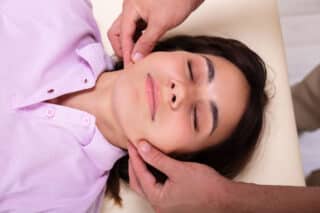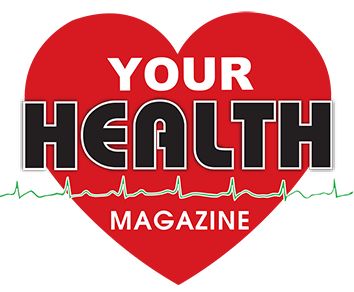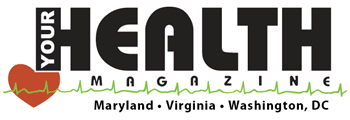
Revive Physical Therapy
4920-A Waterloo Road
Ellicott City, MD
Revive Physical Therapy
10300-B Baltimore National Pike
Ellicott City, MD

More Physical Therapy Articles
Jaw, Neck Pain and Headaches

Role of Physical Therapy
What is TMD?
(Temporo-mandibular Joint Disorder) TMD is a category of disorders involving the joint and muscles of the jaw, face, and neck pain. TMD contributes to limitations in everyday activities including chewing, talking, and yawning.
Symptoms
- Pain in face or jaw, often aggravated with chewing
- Tenderness in the muscles and joint of the jaw
- Joint sounds (popping, clicking)
- Jaw locking or stiffness
- Headaches
- Bruxism (grinding teeth)
- Abnormal swallowing
- Dizziness
- Ringing in the ears
- Virtual disturbances
- Insomnia
- Tingling in hands/fingers
- Deviation of jaw
Causes: trauma, arthritis, whiplash injury, postural abnormality, ligamentous laxity, bruxism, unaligned teeth, congenital deformities, psychological distress
Physical Therapy Treatment: Physical therapy is an important aspect in the treatment of TMD to relieve pain, decrease inflammation, restore normal oral motor function, correct poor posture.
Physical Therapy consists of:
Manual Techniques: hands-on treatment including joint mobilization, stretching, myofascial release and massage in order to improve joint dynamics and muscle tension.
Exercises: guided exercises to increase strength, range of motion, and postural alignment.
Modalities: Treatment tools including ultrasound and electrical stimulation to increase blood flow, relax muscle tension, reduce inflammation and pain.
Patient Education: Information to assist with postural awareness, jaw relaxation and diet education.
Cervicogenic Headaches and Pain
Research shows 70% of patients with TMD also suffer from neck pain. Neck pain can originate from any one or combination of the tissues in the cervical spine. Structures such as facet joints, ligaments and intervertebral discs may create localized symptoms that travel into the arm or head. These traveling symptoms can mimic many of the symptoms of TMD. A headache derived from the cervical spine is one of the three most common types of headaches. Studies indicate that 18% of the population suffers from these headaches.
Symptoms include:
- Headaches in the base of head that may also radiate toward the eyes
- Neck stiffness
- Blurring and reduced vision
- Nausea
- Dizziness
- Tinnitus
The relationship between TMD, headaches and neck pain may make diagnosis difficult in some cases . It is important to contact your physician or physical therapist if you suffer from these symptoms in order to recieve proper treatment.

















